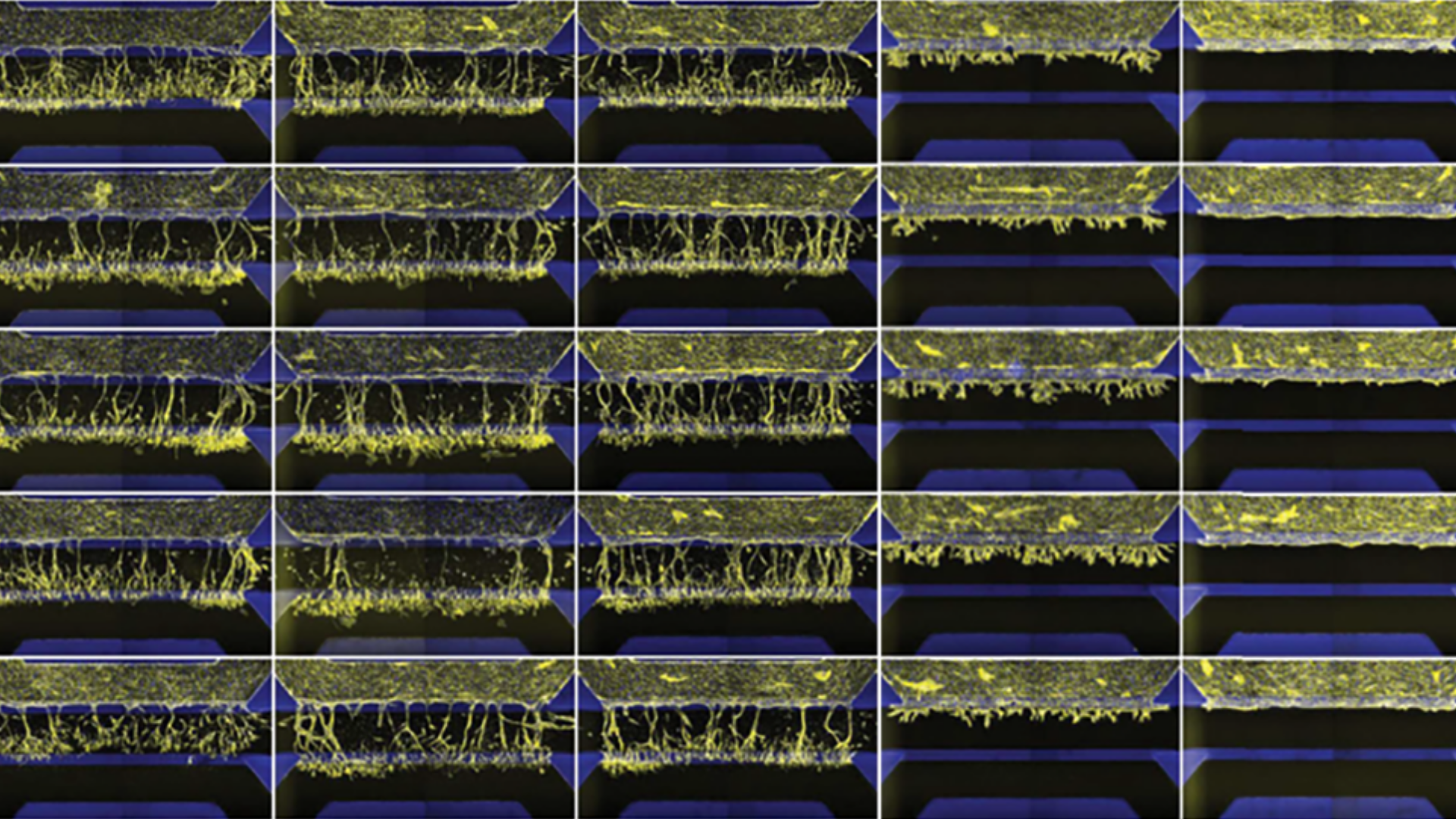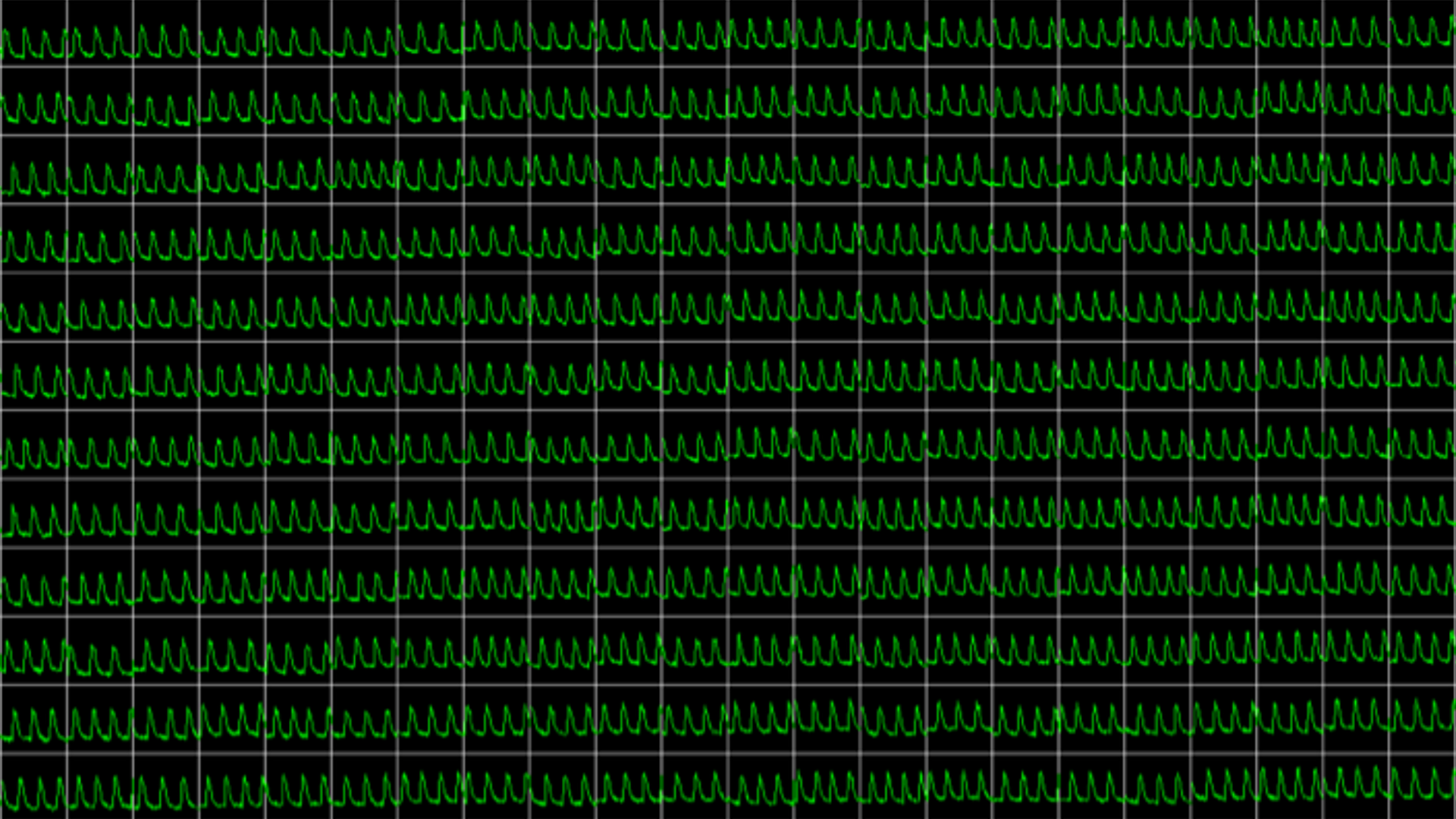Angiogenesis
Angiogenesis, the sprouting of new blood vessels from pre-existing vasculature, plays an important role in the maintenance of body homeostasis and the progression of cancer and Alzheimer’s disease, among others. Studying vessel formation can help identify and validate targets and candidates for treatment of a variety of diseases. Using Ncardia’s human iPSC-derived endothelial cells, we developed a capillary-on-a-chip model*, that is compatible with automated cell plating and imaging systems to enable efficient compound screening.
* This angiogenesis assay was created during the project “Growing real human small blood vessels in the laboratorium”, in which Ncardia participated together with Leiden University Medical Center, Leiden Academic Center for Drug Research and Mimetas

- 3D-matrix and constant perfusion
- Sensitive drug dose response
- Standardized and scalable
Do you want to explore how this assay can help you progress your drug discovery programs? Contact our expert
Applications
Studying compound-induced effects in this process is fundamental to identify pro- and anti- angiogenic therapies that can be used as treatments to promote neovascularization in ischemic tissues or to inhibit pathological vascularization in diseases like cancer. Our scientists can generate gradients of proangiogenic factors to induce vessel sprouting in 3D and simultaneously analyze the effects of compounds in angiogenesis.
Standardized and scalable angiogenesis assay using Ncardia’s iPSC-derived endothelial cells for phenotypic screening.
The iPSC-derived endothelial cells plated on capillary-on-a-chip model enable studying physiologically relevant processes such as sprouting behavior, tip cell formation, directional sprouting, and lumen formation. Additionally, the model shows concentration-dependent response to compound treatment, which provides sensitive information on treatment efficacy.
 Treatment with sunitinib, an anti-angiogenic drug, inhibited sprouting formation in a concentration-dependent manner. Yellow = F-actin, blue = nucleus.
Treatment with sunitinib, an anti-angiogenic drug, inhibited sprouting formation in a concentration-dependent manner. Yellow = F-actin, blue = nucleus.
Our work centers on a simple yet powerful premise:
When we combine deep iPSC knowledge, broad assay capabilities and a demonstrated ability to integrate the biology of human diseases into preclinical research, we can help drug developers make critical decisions earlier and with more confidence.

Study compound-induced effects on blood vessel formation
Assay
Evaluate and quantify the levels of clinically relevant biomarkers
Assay
Obtain real-time recordings of intracellular calcium fluctuations
Assay
Get in-depth and unbiased insights into the effects of therapeutic candidates on cells
Assay
Study drug-induced effects on contractility of cardiac or skeletal muscle cells
Assay
Determine the electrophysiological effects of your therapeutic candidates
Assay
Evaluate endothelial permeability in short and long term
Assay
Study drug-induced phenotypic changes in the cell model of your interest
Assay
Obtain precise information on compounds' impact on metabolic processes

